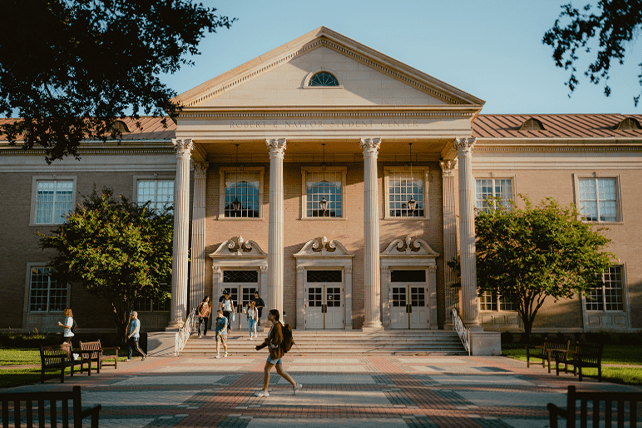He said that the weekly prayer meetings have helped build trust — as did holding open meetings with faculty and staff each semester to share information and answer questions.
“We asked everyone across the campus to set aside personal agendas, to cease working in silos and to work together as collaboratively as possible for the overall good of the institution,” he said.
Ed Stetzer, dean of Talbot School of Theology at Biola University, called the turnaround at Southwestern “remarkable.”
“Southwestern was once the largest seminary in the world, but just a few years ago people were unsure it would make it,” said Stetzer. “David Dockery has consistently had the confidence of Southern Baptists, and he’s used his influenced to bring Southwestern back from the brink and into the future.”
Along with addressing the culture at Southwestern, Dockery also helped put in place a new policy manual for the board, which included more oversight of the school’s finances by the school’s board of trustees, something that had been lacking in the past.
In 2023, the trustees issued a report detailing two decades of fiscal mismanagement, including the $140 million operating deficit. According to the report, Southwestern ran an average deficit of $6.67 million each year from 2002 to 2023. That mismanagement resulted in sanctions from its accreditor, the Southern Association of Colleges and Schools.
The new manual puts more controls in place, said Dockery, who credited board member John Rayburn for leading that process. In 2022, the school finished $9 million in the red, said Dockery. This year, the school will break even and is awaiting word of whether the sanctions from its accreditor will be lifted.
Fixing the school’s finances also meant selling off some of the seminary’s property. In 2023, the school sold a 20-acre property for about $14 million, which helped eliminate its debt.
Southwestern retains considerable assets, including a $160 million endowment and more than 150 acres of property. The challenge now, Dockery said, is to use those assets well.
The school currently has a head count of 650 in its master of divinity program. (Counting part-time and full-time students, they add up to 346 full-time slots, according to data from the Association of Theological Schools.) The school’s largest program is a master’s program with 1,018 students, with a full-time equivalent of 420, whereas its doctor of ministry program has 308 students and an FTE of 92. The school had its largest graduation since 2002, with 415 students this May. Southwestern also announced that it had revised its M. Div. program so that it can be completed in less time.
Now that the school is stable, the next task is to make sure the school has a plan for a sustainable and healthy future.
“We have ongoing work to do to be in a place of what I would say is institutional health and flourishing, and so we’re working toward those ends,” he said.
This article originally appeared here.

